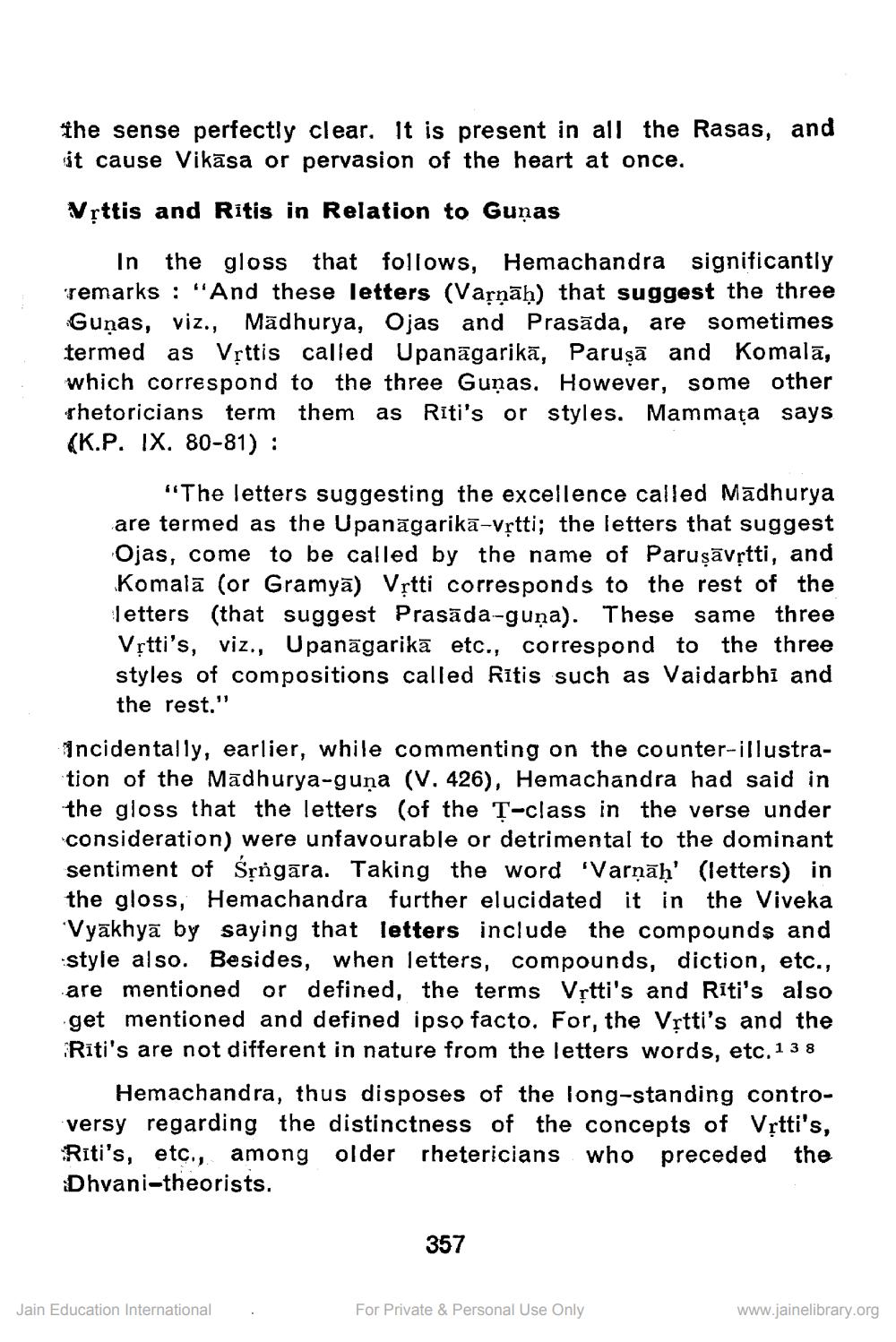________________
the sense perfectly clear, it is present in all the Rasas, and it cause Vikāsa or pervasion of the heart at once.
Vịttis and Ritis in Relation to Guņas
In the gloss that follows, Hemachandra significantly remarks : "And these letters (Vaļņāh) that suggest the three Guņas, viz., Mādhurya, Ojas and Prasāda, are sometimes termed as Vșttis called Upanagarikā, Paruşā and Komalā, which correspond to the three Gunas. However, some other rhetoricians term them as Riti's or styles. Mammața says (K.P. IX. 80-81) :
"The letters suggesting the excellence called Madhurya are termed as the Upanāgarikā-vștti; the letters that suggest Ojas, come to be called by the name of Paruşāvștti, and Komalā (or Gramyā) Vrtti corresponds to the rest of the letters (that suggest Prasāda-guna). These same three Vịtti's, viz., Upanāgarikā etc., correspond to the three styles of compositions called Rītis such as Vaidarbhi and the rest."
Incidentally, earlier, while commenting on the counter-illustration of the Mädhurya-guna (V. 426), Hemachandra had said in the gloss that the letters (of the T-class in the verse under consideration) were unfavourable or detrimental to the dominant sentiment of Sțngara. Taking the word 'Varnāh' (letters) in the gloss, Hemachandra further elucidated it in the Viveka Vyākhyā by saying that letters include the compounds and style also. Besides, when letters, compounds, diction, etc., are mentioned or defined, the terms Vịtti's and Riti's also get mentioned and defined ipso facto, For, the Vrtti's and the Rīti's are not different in nature from the letters words, etc. 1 3 8
Hemachandra, thus disposes of the long-standing controversy regarding the distinctness of the concepts of Vștti's, Riti's, etc., among older rhetericians who preceded the Dhvani-theorists.
357
Jain Education International
For Private & Personal Use Only
www.jainelibrary.org




